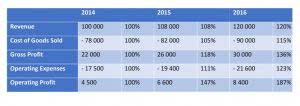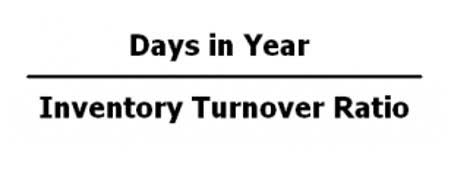Content

That’s important for things like setting prices, getting insured, budgeting, working out taxes, and selling your business. It can also help you identify where you’re making the most money in your business. Inventory has a value – even before you do anything with it – and so it’s listed https://www.bookstime.com/tax-rates/new-york as an asset on your business balance sheet. But it can lose its value fast if it gets old, out of date, damaged, or the market price for that type of product drops. Multiplying this average cost by the number of items you have will tell you the rough value of your inventory.
Instead, most businesses — including sole proprietors working for themselves and accounting departments at international corporations — automate financial tracking and reporting with accounting software. If you own a merchandising business—for example, a shoe store that purchases shoes from manufacturers or wholesalers and sells these shoes to consumers—your inventory accounting system is somewhat straightforward. Inventory accounting involves accurately depicting a business’s financial health as determined by its inventory. There are many variables that inventory accounting deals with, from the movement of the stock, daily fluctuations in quantity, ageing inventory and deadstock, and so on. Accounting is the discipline of calculating, processing, and communicating financial information for businesses and individuals.
How Do I Calculate Inventory Value Using the FIFO Method?
IAS 2 requires the same cost formula to be used for all inventories with a similar nature and use to the company, even if they are held by different legal entities in a group or in different countries. In practice, for an acquired business this often requires rapid realignment to its new parent’s group methodologies and systems. Unlike IAS 2, US GAAP does not allow asset retirement obligation costs incurred as a consequence of the production of inventory in a particular period to be inventory accounting a part of the cost of inventory. Instead, such costs are added to the carrying amount of the related property, plant and equipment. The subsequent depreciation of the cost is included in production overheads in future periods over the asset’s estimated remaining useful life. Under IAS 2, the cost of inventories measured using the retail method is reviewed regularly, in our view at least at each reporting date, to determine that it approximates cost in light of current conditions.

The acronyms used in this calculation are beginning inventory (BI), net purchases (NP), cost of goods sold (COGS), and ending inventory (EI). These are questions you have to answer as you set up your inventory accounting system. If you need a little extra help with understanding these three types of inventory accounting, I will run through it again using new examples. Process the transaction on an Internal Billing (IB) e-doc to credit interdepartmental income on your operating account and debit an interdepartmental expense in the purchasing department’s account.
Advantages of Inventory Accounting
Instead of tying up money in slow-moving stock, you can keep it as cash and use it for more productive things like paying down debt or improving the business. You should consult your own professional advisors for advice directly relating to your business or before taking action in relation to any of the content provided. In general, US GAAP does not permit recognizing provisions for onerous contracts unless required by the specific recognition and measurement requirements of the relevant standard.
Inventory are the items that your business has bought, with the intention of on-selling to customers. The items may be resold without change, or they could be combined into a new product. Learn the strategies and techniques behind successful inventory management. You may be required to do an inventory count before submitting your business tax return.
Beginner’s Guide to Inventory Accounting: What is it and Why to do it?
Inventory accounting helps businesses determine the value of their stock on hand and break down the costs of purchasing, producing, and managing inventory items. Inventory accounting is the practice of valuing and reporting on the physical inventory a business holds. Acumatica Cloud ERP offers powerful finance and business intelligence tools to streamline company-wide accounting processes. Track costs, control billing, and manage time/expenses with multi-currency support and powerful financial reports.
- A sensible approach is to determine landed costs as soon as possible on the basis of all the available information.
- These GAAP differences can also affect the composition of costs of sales and performance measures such as gross margin.
- In general, US GAAP does not permit recognizing provisions for onerous contracts unless required by the specific recognition and measurement requirements of the relevant standard.
- To correct a shortage, reduce (C) the balance on the Inventory object code and increase (D) the Inventory Over/Short object code in the sales operating account.
- For the most part, bill management is considered a more advanced feature that comes with mid-tier plans and pricier accounting services only.
- It will help you see if your business is performing as well as it could.
![]()

